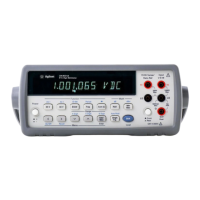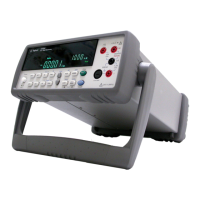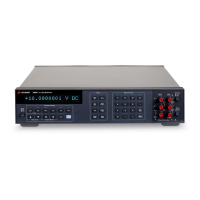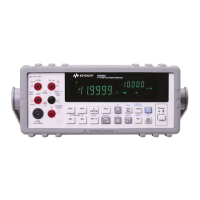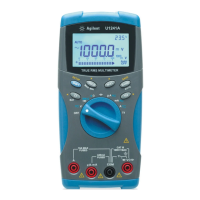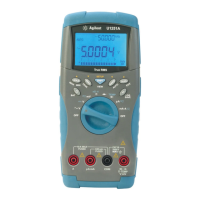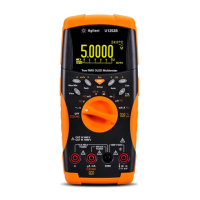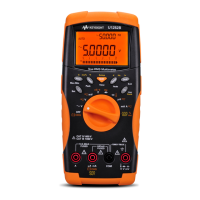34410A/11A User’s Guide 105
Measurement Tutorial 4
There are situations, however, where you might want to know the ac+dc
true RMS value. You can determine this value by combining results from
dc and ac measurements, as shown below:
For the best ac noise rejection, you should perform the dc measurement
using an integration time of at least 10 power–line cycles (PLCs).
True RMS Accuracy and High–Frequency Signal Content
A common misconception is that "since an ac multimeter is true RMS, its
sine wave accuracy specifications apply to all waveforms." Actually, the
shape of the input signal can dramatically affect measurement accuracy,
for any multimeter, especially when that input signal contains
high–frequency components which exceed the instrument’s bandwidth.
As an example, consider a pulse train, one of the most challenging
waveforms for a multimeter. The pulse–width of that waveform largely
determines its high–frequency content. The pulse waveform’s frequency
spectrum is represented by its Fourier Integral. The Fourier Series
frequency components are just samples along the Fourier Integral, at
multiples of the input pulse repetition frequency (prf).
On the following page, the first figure shows the Fourier Integral of two
very different pulses: one of broad width (200ms), hence low prf; the other
narrow (6.7ms), hence high prf. The second figure is an approximation of
the shape of the input frequency response for the 34410A/34411A
multimeters. Comparing these two figures along the time axis, notice that
the spectrum of the narrow pulse exceeds the effective bandwidth
of the instrument. The net result will be a less accurate measurement of
the narrow, high–frequency pulse.
In contrast, the frequency spectrum of the broad pulse has fallen off
significantly below the multimeter’s 300kHz (approximately) band–edge, so
measurements of this pulse will be more accurate.
Reducing the prf increases the density of lines in the Fourier spectrum,
and increases the portion of the input signal’s spectral energy within the
multimeter’s bandwidth, which improves accuracy.
In summary, error in RMS measurements arise when there is significant
input signal energy at frequencies above the multimeter’s bandwidth.
fT
fT
π
)sin(
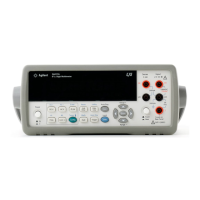
